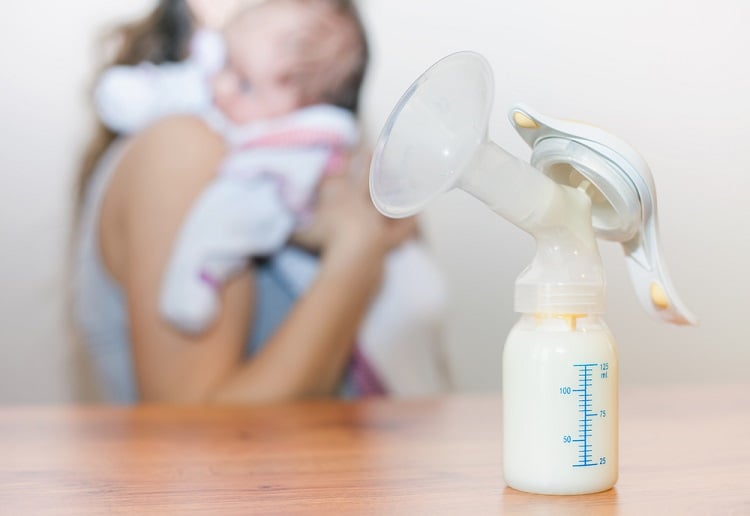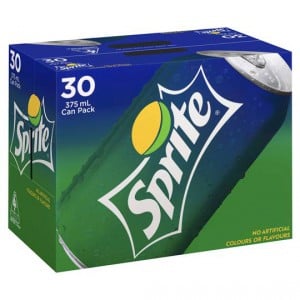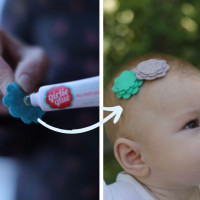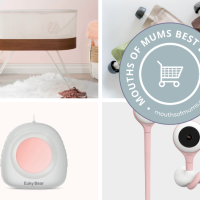Reports an infant suffered brain damage from a bacterial infection contracted from a breast pump.
The US Centers for Disease Control and Prevention (CDC) has released updated guidelines on how to clean your breast pump, following a very sad case where a three-week-old preemie suffered meningitis and brain tissue damage from a bacterial infection contracted from expressed breast milk.
A bacteria called Cronobacter sakazakii was later detected inside the mum’s breast pump parts and in the kitchen sink drain at home, reports Parents.com.
The report notes that traces of the deadly bacteria were found in the infant’s mother’s breast pump kit, in some of her frozen milk samples and in the drain of her sink at home.
Cleaning your breast pump properly really depends on what brand and type of breast pump you have—make sure you read your manual and get to know which parts do what. Flanges, breast shields, membranes—it’s confusing!
Here are the highlights from the handy, CDC fact-sheet that all pumping mums and their partners should try to follow:
- Wash your hands before pumping.
- Use disinfectant wipes to clean the knobs and buttons of your pump before and after you use it, especially if it’s a shared or rented pump with multiple users.
- If you can, rinse the pump parts that come into contact with milk immediately and don’t leave milk residye in the flanges, shields or membranes.
- Don’t leave your pump parts to sit in the sink.
- Never soak or submerge breast pump parts in your kitchen sink. The CDC recommends using a dedicated plastic wash basin just for pump parts, nipples and bottles.
- It’s also safer to use a dedicated bottle brush or pump brush for cleaning. Don’t use the same sponge or scrubber you use for the rest of your dishes.
- Let pump parts air-dry arranged on a clean, freshly-laundered dishtowel or paper towel on the counter. Do not rub or pat dry with a dishtowel.
- Something beginners might not know: milk doesn’t travel through the tubing of your pump. The tubing is for the air flow that creates suction between the valves, membranes and your nipples. You shouldn’t see milk, moisture or mould in the clear tubing. (If you notice condensation in the tubing of an electric pump, try running the motor for a few minutes when it’s not hooked up to your breasts, to dry it out. If you see mould in the tubing, it’s a good idea to simply buy replacement tubing.)
- You’ll also want to sanitize everything—including your bottle brush—in addition to regular cleaning of pump parts. The CDC recommends sanitizing once a day. Put all pump parts and accessories in the dishwasher in one of those baskets designed for small, loose bottle parts (and use the sanitize and heat-dry settings). Other sanitizing options include submerging parts in boiling water for two minutes; using a steam sanitizer or sterilizer; or using those handy, microwaveable steamer sanitizing bags.
- You may want to sanitize more frequently for babies under three months, for preemies, and for infants with immune-compromising medical conditions. (Consult with your doctor.)
Please note: This particular kind of bacteria is super rare (the CDC says they usually see only four to six cases a year) and this is the first time they’re heard of a baby picking up this particular kind of infection from a contaminated breast pump or bottle of expressed milk.
Cleaning recommendations from ABA
A mother’s own expressing equipment does not need to be disinfected or sterilised for a healthy, term baby.
If you are expressing several times a day for a healthy baby, your expressing equipment should be rinsed well in cold water after each use to remove the milk. Store it in a clean, closed container. If you have a fridge, you may simply store the unrinsed expressing equipment in there, in a clean, closed container or plastic bag.
If you cannot store your expressing equipment in the fridge between sessions, have extra parts, so you are not always rinsing and washing. This information is consistent with the NHMRC breastmilk storage guidelines as per table above.
For example breastmilk may be stored for up to 6-8 hours at room temperature and up to 72 hours in the fridge.
The expressing equipment should be cleaned really well at least once every 24 hours while it is in frequent use.
If the expressing equipment is only being used once a day or less, clean it after each use.
Thorough cleaning is important to make sure you have removed all milk from the breast pump parts and storage containers.
1. Wash your hands well with soap and water. Dry them on something clean — a new paper towel or a clean, unused cloth towel.
2. Take apart all containers and the breast pump so that every part can be cleaned well. Rinse in cold water to remove milk from all the parts.3
3. Take care to remove all traces of grease, milk and dirt with a small amount of dishwashing liquid and hot water. Use a brush kept just for this purpose.
4. Rinse at least twice in hot water.
5. Drain bottles and containers upside-down on clean paper towel or a clean cloth towel. Cover while they air dry. Before putting away, ensure no water droplets remain in the containers or on any parts. If any water remains, dry carefully.
6. Store the dry kit in a new plastic bag, plastic wrap, more paper towel or clean, covered container until next use.
Except for the sterile expressed breastmilk bags or new plastic bags, all containers and breast pump parts used to collect or store breastmilk will need to be cleaned before use.
In areas where there are different water supplies for drinking and washing, use drinking water to wash and rinse the pump equipment.
If your baby is sick, be guided by the advice of your baby’s medical team about cleaning your equipment. Also, if you and/or your baby have thrush or you have any type of infection on your nipples, you might need to disinfect your equipment after cleaning it.
Talk to your medical adviser, child health nurse, lactation consultant or an Australian Breastfeeding Association counsellor for suggestions.
Reminder: please remember this bacterial infection is quite rare, however we do recommend you clean your pump carefully on a regular basis.
Share your comments below
Shutterstock photo
We may get commissions for purchases made using links in this post. Learn more.




















-

-
-
-
meedee said
- 27 Feb 2022
Reply
-

-
-
-
mom94125 said
- 02 Sep 2017
Reply
-

-
-
-
tessie said
- 26 Aug 2017
Reply
-

-
-
-
june11 said
- 13 Aug 2017
Reply
-

-
-
-
mom64736 said
- 02 Aug 2017
Reply
-

-
-
-
ella12 said
- 01 Aug 2017
Reply
-

-
-
-
mom101628 said
- 27 Jul 2017
Reply
-

-
-
-
rachel1970 said
- 27 Jul 2017
Reply
-

-
-
-
Ellen said
- 27 Jul 2017

Reply
-

-
-
-
taynik46 said
- 25 Jul 2017
Reply
-

-
-
-
mom90758 said
- 25 Jul 2017
Reply
-

-
-
-
mom206279 said
- 25 Jul 2017
Reply
Post a comment11:16 am
10:05 pm
7:53 pm
10:29 pm
2:59 pm
12:12 pm
9:35 pm
7:13 am
1:49 am
9:02 pm
2:54 pm
1:35 pm